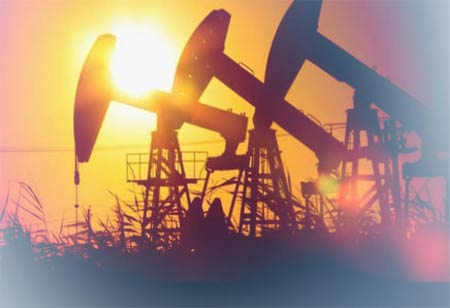Thank you for Subscribing to Energy Business Review Weekly Brief
How Does Oil and Gas Drilling Affect Wildlife?
As oil and gas drilling activities continue, coupled with rising extinction rates and an escalating climate crisis, decisive actions must be implemented immediately to safeguard wildlife and the broader natural environment.

By
Energy Business Review | Wednesday, December 11, 2024
Stay ahead of the industry with exclusive feature stories on the top companies, expert insights and the latest news delivered straight to your inbox. Subscribe today.
As oil and gas drilling activities continue, coupled with rising extinction rates and an escalating climate crisis, decisive actions must be implemented immediately to safeguard wildlife and the broader natural environment. This article explores the four different ways in which oil and gas drilling can harm wildlife.
Fremont, CA: For many years, the federal government has predominantly viewed public lands as a reservoir for oil, gas, and other limited resources. It is only in recent times that there has been a shift towards reassessing these practices to prioritize conservation more significantly. Despite some advancements, the repercussions of past actions persist. The reality is that oil and gas initiatives have detrimental effects on wildlife worldwide. While numerous factors contribute to population declines, and no single threat can be solely blamed, the effects of the oil and gas sector are unmistakable.
Below are several ways in which oil and gas development projects present significant risks to wildlife:
Oil and Gas Drilling Causes Climate Issues:
The primary way the oil and gas industry endangers wildlife is by generating greenhouse gas emissions that exacerbate the climate crisis. While the threats posed by climate change may appear distant, their effects are already manifesting and intensifying alarmingly. Recently, unprecedented temperatures and severe weather phenomena have been recorded globally.
These alterations have a catastrophic impact on wildlife. Changing climatic conditions significantly disrupt ecosystems; tropical flora is increasingly being discovered at higher latitudes. Concurrently, unusually destructive occurrences such as extreme wildfires and hurricanes obliterate vast land areas. Wildlife are compelled to migrate as habitats undergo rapid transformation or risk extinction.
Drilling for Oil and Gas Damages Habitat and Interferes With Migration:
Certain species, such as urban pigeons and raccoons, can remarkably adapt to human-altered environments. However, numerous wildlife species depend on untouched natural habitats for their survival. Migratory animals, in particular, require expansive, unfragmented landscapes to navigate safely and access essential resources. The introduction of oil and gas developments, characterized by well pads, fences, pipelines, and roads—along with persistent noise and light pollution disturbances—fragment these landscapes, reducing the safe habitats available for wildlife and pushing them into more dangerous areas.
Moreover, contrary to misleading assertions from the industry suggesting that wildlife are either indifferent to or even attracted by oil and gas operations, research indicates that wildlife exhibits a significant aversion to such infrastructural developments.
Oil and Gas Drilling Make the Air and Water Dirty:
The detrimental impact of oil and gas projects on local air and water resources is equally concerning. Regardless of the extraction method, the process could be cleaner and more straightforward: drilling activities release heavy metals, toxic particulates, and volatile compounds that contaminate land, air, and water. Research has identified substantial levels of pollutants in the air downwind of oil and gas wells, which are associated with severe health issues in humans. Concurrently, these operations produce millions of gallons of contaminated wastewater that can infiltrate surface and groundwater if not adequately treated or disposed of.
Oil and Gas Drilling Inevitably Leads to Spills and Accidents:
In addition to the already significant issue of "routine" pollution, oil and gas production accidents present an even more severe danger. When a serious incident occurs, the resulting harm to the natural environment can be catastrophic and irreversible. Oil leaks and hazardous waste byproducts contaminate ecosystems and harm wildlife, while the chemical dispersants employed to mitigate oil spills can also be toxic. Such incidents, even those classified as "minor" spills, can have devastating consequences.






